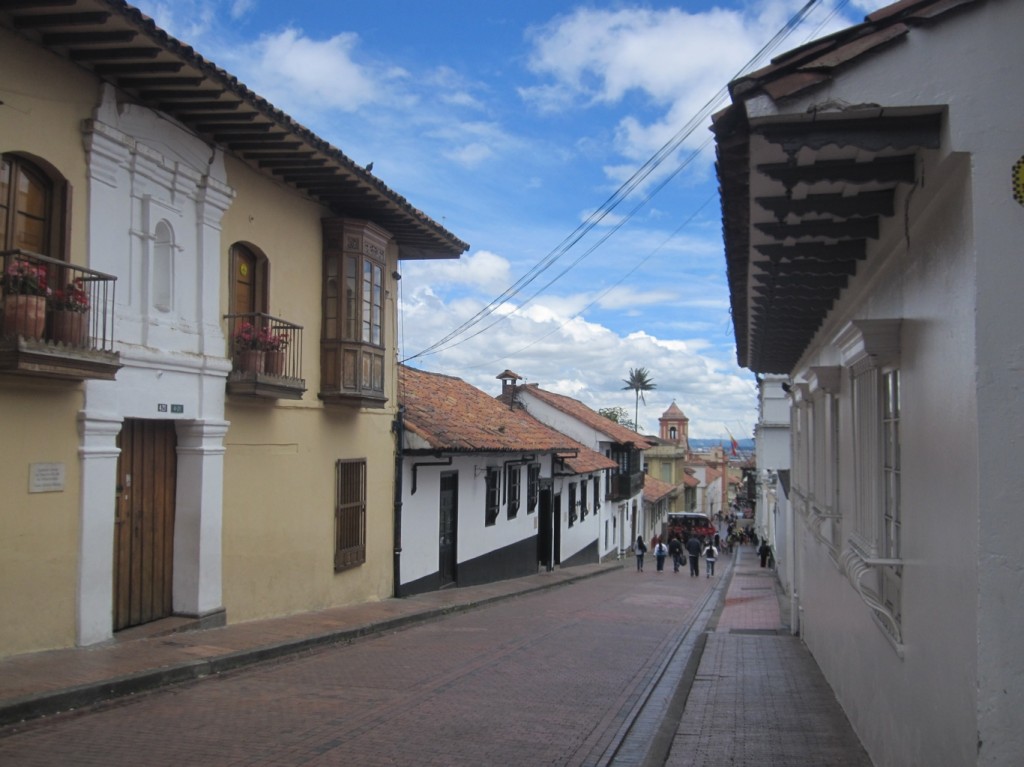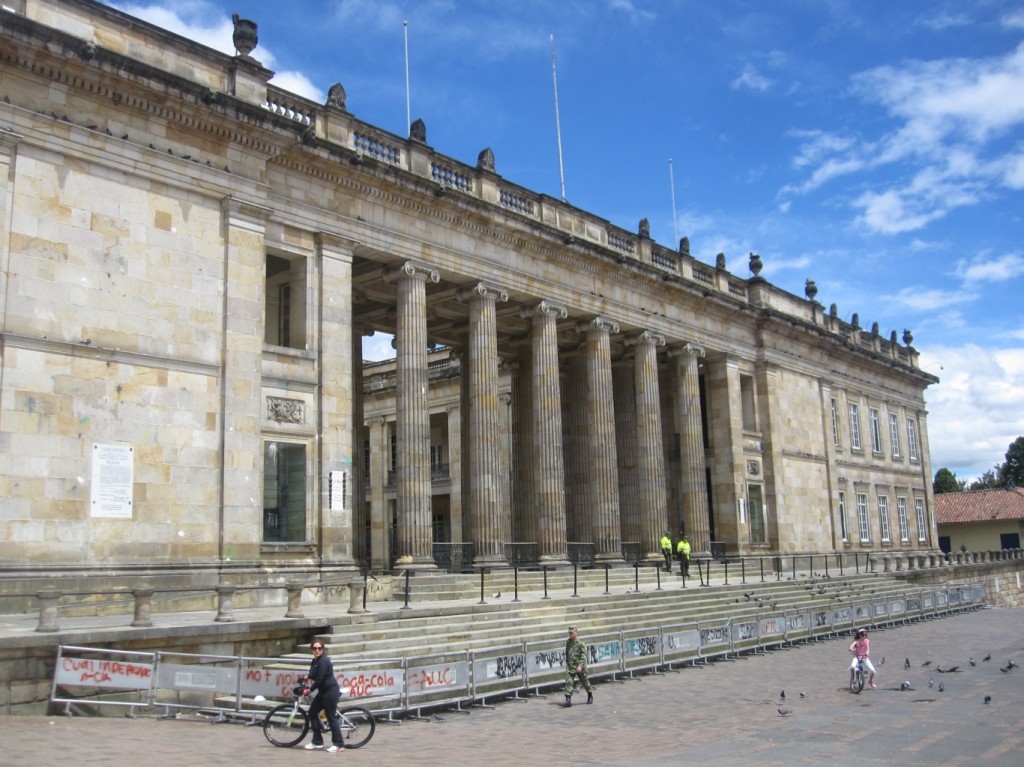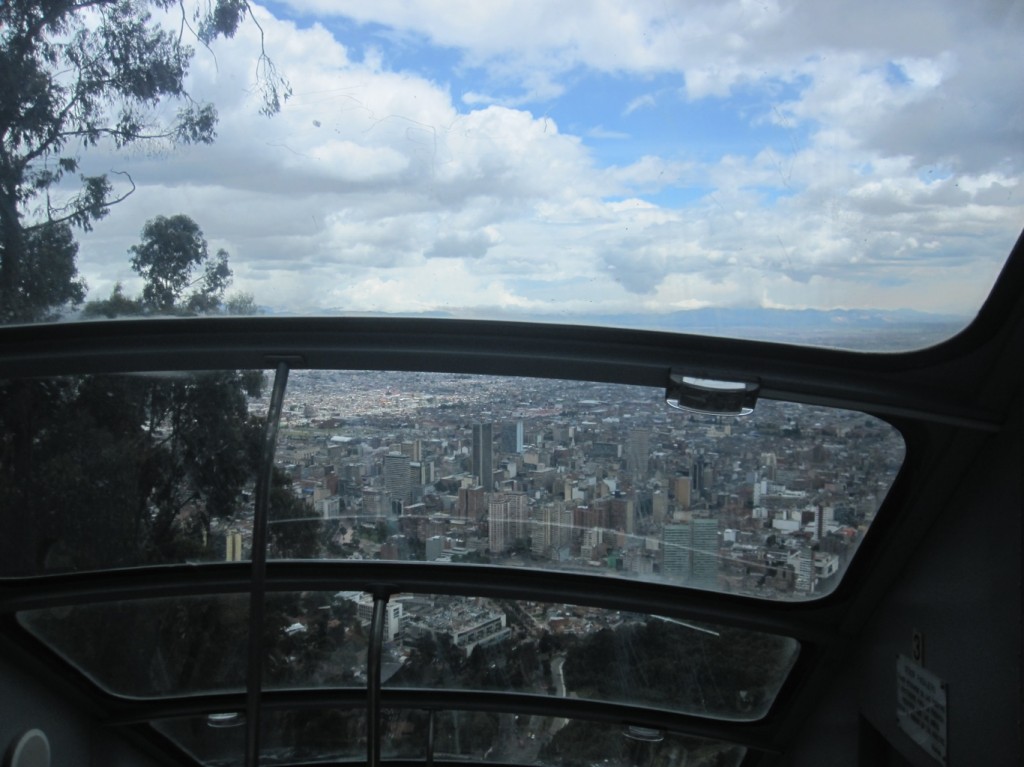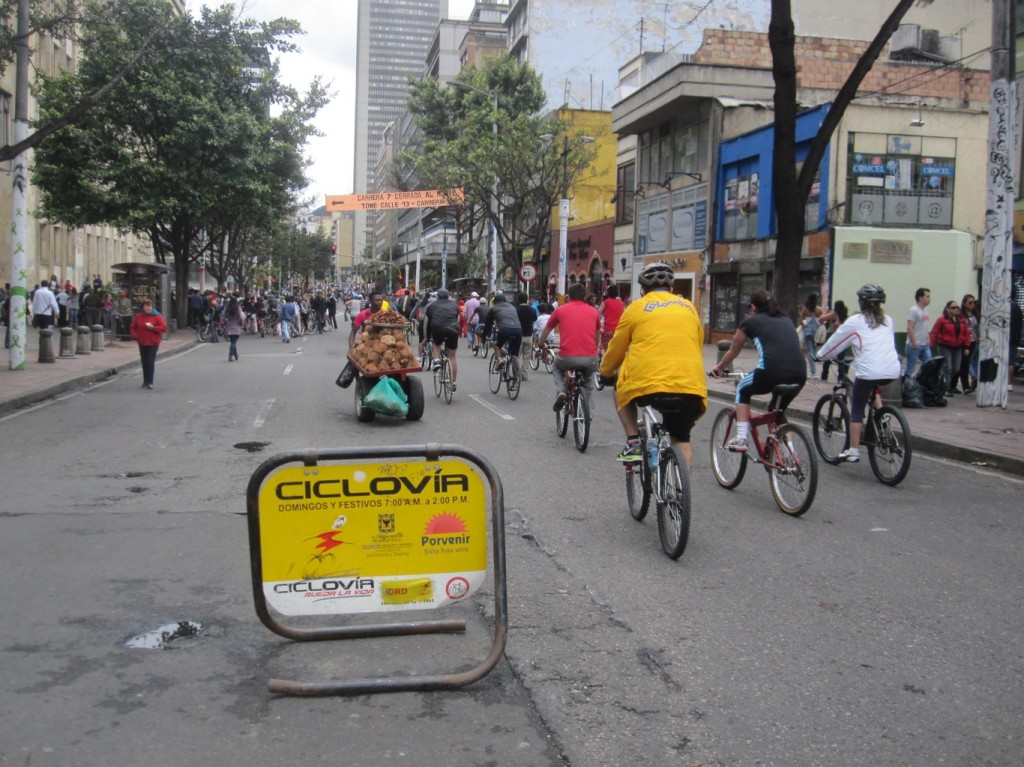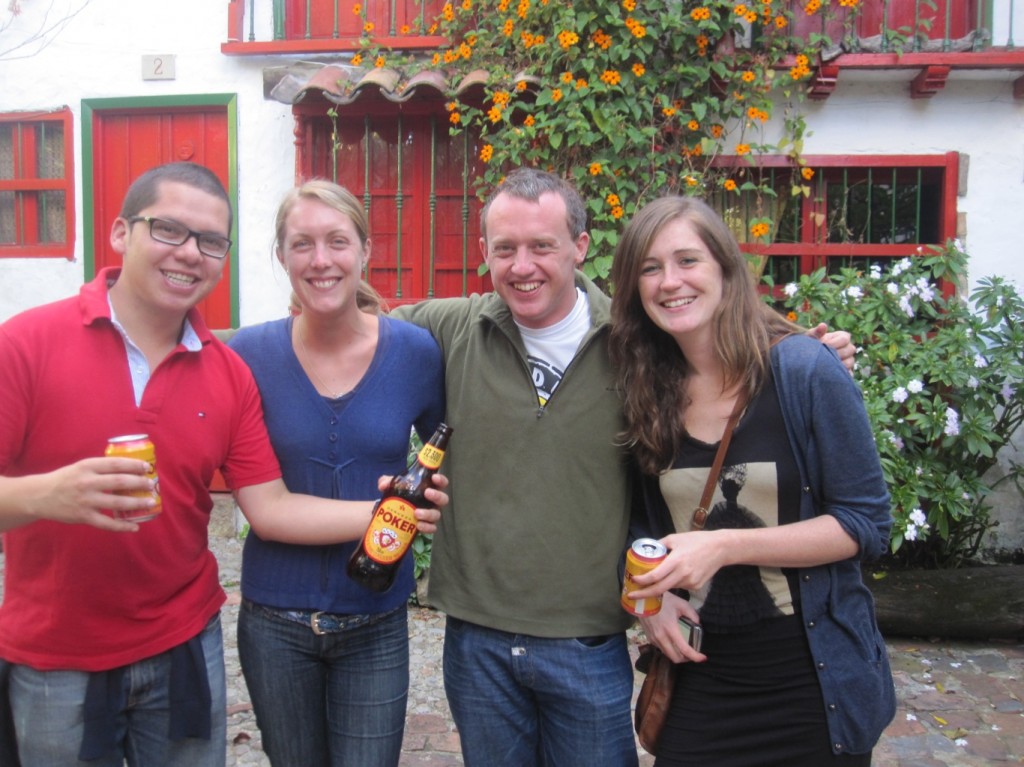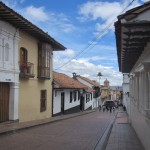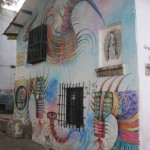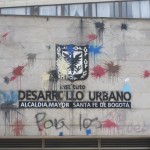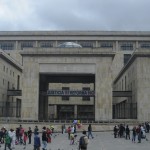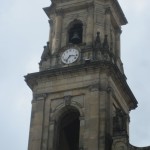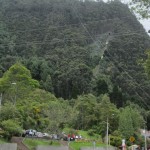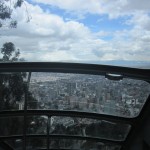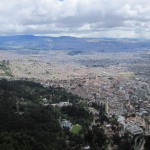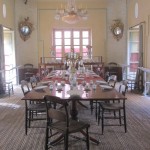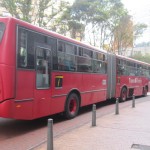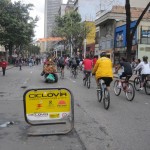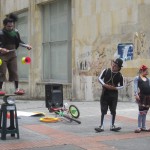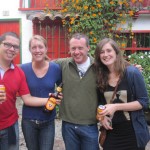Our first day in Bogota was a strange one. We’d decided to go for a wander around the centre, and it being a Friday afternoon, we weren’t quite expecting the streets to be eerily deserted – and filled with security officials, both in uniform, and the much more suspicious suited secret-service style guys listening to their earpieces. Each museum we tried to go to was inside the security cordon, and even when we made it through, we found them closed, with an officious guard muttering at us in rapid Spanish. We had been slightly apprehensive about the (massively overhyped, but sometimes real) dangers of Colombia’s capital – and this didn’t exactly inspire confidence. Was there some terrorist alert we hadn’t heard about? Had war been declared while we were showering? Was the end of the world looming and these our final moments of life?!
Well, no. It seems it was just a public holiday, and the security around the congress building is understandably a little tight in a country where there is still guerrilla warfare going on – even if that rarely touches Bogota directly. We walked slightly easier, although the barrage of fireworks that went off later that night weren’t entirely welcomed by us!
Having said, the day still ended up being pretty security-filled. The museum we eventually made our way into was, appropriately, the Police Museum, former headquarters housed in a gorgeous colonial palace where we were taken round by an excellent young member of the national police working there as part of his military service. Interesting and eye-opening. The fun didn’t stop there though – as we wandered back up to our hostel, we found a small music festival rocking the square on our doorstep. Two rappers were in a freestyle lyrical battle on the stage – but something was a little odd about the scene. It seems this was actually a police festival – banners with their logo were everywhere, uniformed officers in day glow yellow made up most of the crowd, and most bizarre of all were the huge inflatables of a policeman on a motorbike at the side. We still don’t understand now – police party, or failed community engagement?
Looming over the east of the city is Monserrate, a 3100m peak with a church on top – the only time we’ve ever seen a holy building illuminated by bright colour-changing lights at night. There’s a funicular railway running the impossibly steep route up to the top, with great views over the expanse of the city from up there, and a real feeling of being ‘up in the clouds’ when a rainstorm swept in across the valley.
At the foot of the mountain is Quinta de Bolivar, a house given to the South American liberator (from the Spanish) who is an icon everywhere we’ve been – it just takes me to mention that my first name is Simon and pretty much everyone responds with ‘Simon Bolivar, que fantástico’ or some other acclaim. He’s the hero after which Bolivia was named, and was responsible for seeing colonial Spanish rule kicked out of the continent in a succession of military victories. The house was gifted to him in recognition of his triumphs for Colombia. I think most revealing of all was his bedroom – or more accurately, his bed. You can’t see it in the various portraits that adorn walls across the continent, but Mr Bolivar was very short, and so apparently was his mistress, since his bed looked like it was made for a child.
Our final day in Colombia gave us a taste of a different side to the city. Every Sunday many of the streets in the centre are closed to traffic for ‘Ciclovia’, when bikes, skaters and pedestrians take over for some weekly healthy exercise. It’s a great idea, and combined with markets and street performers really brings a festive spirit to the city. London manages its similar ‘Freewheel’ day once a year; it would be fantastic to see it made a weekly thing.
A friend from Woodcraft, Lucie Fleming, is currently living in Bogota on an exchange project, and we managed to meet up for the BBQ of a friend of hers our last evening – after a mandatory taste of hot chocolate and cheese that I’m sure Laura will relish describing in a future post. Lovely friendly people, tasty food, and a chance to sample the local spirit too – an appropriate way to end our stay in a country that so absolutely defies the dangerous drug-fuelled stereotype cast by our media back home; we’ve found nothing but welcoming smiles and a real zest for life amid modern cities and a nice hot climate. Thanks to everyone for recommending we change our plans and visit – and to Lucie for welcoming us!
Simon
- Colonial buildings in La Candelaria
- Just round the corner from our hostel
- Columns and protest barriers
- You can spot the government buildings by the paint and slogans!
- Justice yes, reform no – referring to the recent bid by MPs to reform the justice system, and make themselves unprosecutable for being associated with paramilitaries at the same time!
- Clock tower – note the 4 is IIII – the clockmaker made a mistake, and then covered for it by making all future clocks the same too
- That’s the funicular disappearing up the mountain
- View going up Monserrate
- View from Monserrate
- Bolivar’s dining table
- Boris wouldn’t be impressed
- Ciclovia – car free streets, every week!
- Street performers at Ciclovia
- Partying with Lucie and her friend Marco
- We decided to secure our bags flying out of Bogota, but the DIY way – a roll of cling-film each, total cost less than $1, compared to $15 at the airport!

